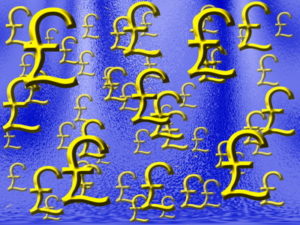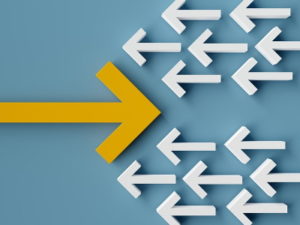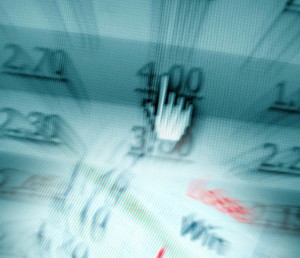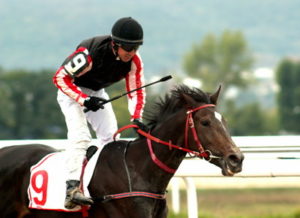How Big Bets Move Odds Markets
 Shortening or lengthening seemingly on a whim as they do, predicting which way betting odds are likely to go can be tricky to say the least.
Shortening or lengthening seemingly on a whim as they do, predicting which way betting odds are likely to go can be tricky to say the least.
The markets move based on a number of things, not least people placing bets on them. A lot of money wagered on one selection will shorten its odds, while conversely lengthening the odds for other selections less backed. In effect betting odds are partly a reflection of public confidence, in the same way share prices reflect public confidence in the given company or product.
Just as share prices can increase when demand is high, costing more to buy those shares, so too betting odds decrease when demand is high, requiring higher stakes to get specific returns. With betting, though, as the price of one betting market goes down other connected markets increase in odds. This is why big bets can move markets, not just the price for the market the big bet is placed on, but also all the other prices connected to it.
Bookmakers employ teams of traders usually made of the same number crunchers that are typically employed by financial companies in order to predict which way future markets will swing because they are experts in the fields of risk analysis and odds compilation. These traders are then backed by hugely powerful computers and algorithms that help then analyse form and data to set the prices.
That’s how the starting odds are set, but why do they change?
Why Betting Odds Move
 There are a number of reasons why the odds shift and drift.
There are a number of reasons why the odds shift and drift.
First of all, circumstances can change, such as players suffering injuries, managerial changes, even weather conditions can all play their part.
Odds movement should always be expected and sometimes the way it moves can be obvious and easy to predict, while other times the direction of movement can be very hard to call.
This is why so many professional gamblers leave it fairly late until placing their bets.
Another reason the odds shift is because of the amount of money that has been put behind a particular pick.
This could be either a large volume of punters wagering on the same pick, or a very large value bet being placed by a high roller.
Either of these can force the bookies to shorten the odds.
In short, the more money coming in on an outcome will result in the odds shortening. At the same time it will cause odds for other connected outcomes to lengthen.
How Does It Work?
 Taking a simple example of a tennis match result, which only has two possible outcomes. Let’s assume both players are equally matched and based on form and other stats the outcome is exactly 50:50.
Taking a simple example of a tennis match result, which only has two possible outcomes. Let’s assume both players are equally matched and based on form and other stats the outcome is exactly 50:50.
In this case you are not going to get even odds from the bookie as they build in their own margins. The price on each player will be more like 10/11. Here the bookie has a built in a margin of 4.77% into the market, meaning if they attract the same amount of bets on both outcomes they stand to make £4.77 for every £100 staked, irrespective of the outcome. This is known as a balanced book.
Let’s now say that someone comes and bets £50,000 on the first player. This will mean their odds will shorten and the odds for the other player will lengthen. The actual chances of either winning on paper have not changed but now the bookie needs to try to balance their risk because they have too much exposure on the first player, i.e. if the first player wins the betting company stands to make a loss.
Therefore, the bookmaker now lengthen the odds on the second player to try to attract more bets on the second player to help them balance the market, so they stand to lose less, or, if they get enough wagers on the second player they can make a profit.
The exact odds swing will be relative the size of the book (total amount of money bet) and the size of the odds moving bet placed. Let’s just say in this example the bookie shortens the first player to 1/4 and the second player increases to 3/1. This market has a margin of 4.39%, roughly similar to the original, but will attract a lot more bets now on the second player and discourage bets on the first player. Again, remember the chances of either winning on paper are still 50:50.
As more and more money is wagered on the second player the odds will start to even up more and more to balance the risk exposure.
In the end odds simply represent risk and exposure from the bookie offering it. Not all markets are balanced but bookies work to get as close to a balanced book as possible. Basically bookmakers don’t want to bet on a specific outcome, that is risky and that is what punters do. Instead, they just want to be in a position to make money whatever the outcome is.
Lucky For Some
 As an example, earlier this year, one anonymous punter placed a huge last minute bet on a non-memorable race in Japan.
As an example, earlier this year, one anonymous punter placed a huge last minute bet on a non-memorable race in Japan.
Just seconds from the off, the unknown high roller stuck £82,000 down on the 20/2 long shot North Luciole.
And while the horse lumbered home in fourth, the massive deposit saw the horse’s SP shorten from his outsider odds to the evens favourite.
At the same time, the eventual winner’s price drifted out considerably, leaving the big bettor out of pocket and a load of happy punters who picked up incredibly better value on the winner which was a horse called I’ll Be The One.
In the fixed odds betting, I’ll Be The One had been the 2/1 favourite but after the £82,000 wager was placed on North Luciole in the pools, I’ll Be The One’s odds went up as high as 156/1.
Such an example isn’t very common, but gives a good indicator of how big wagers can alter the odds.



